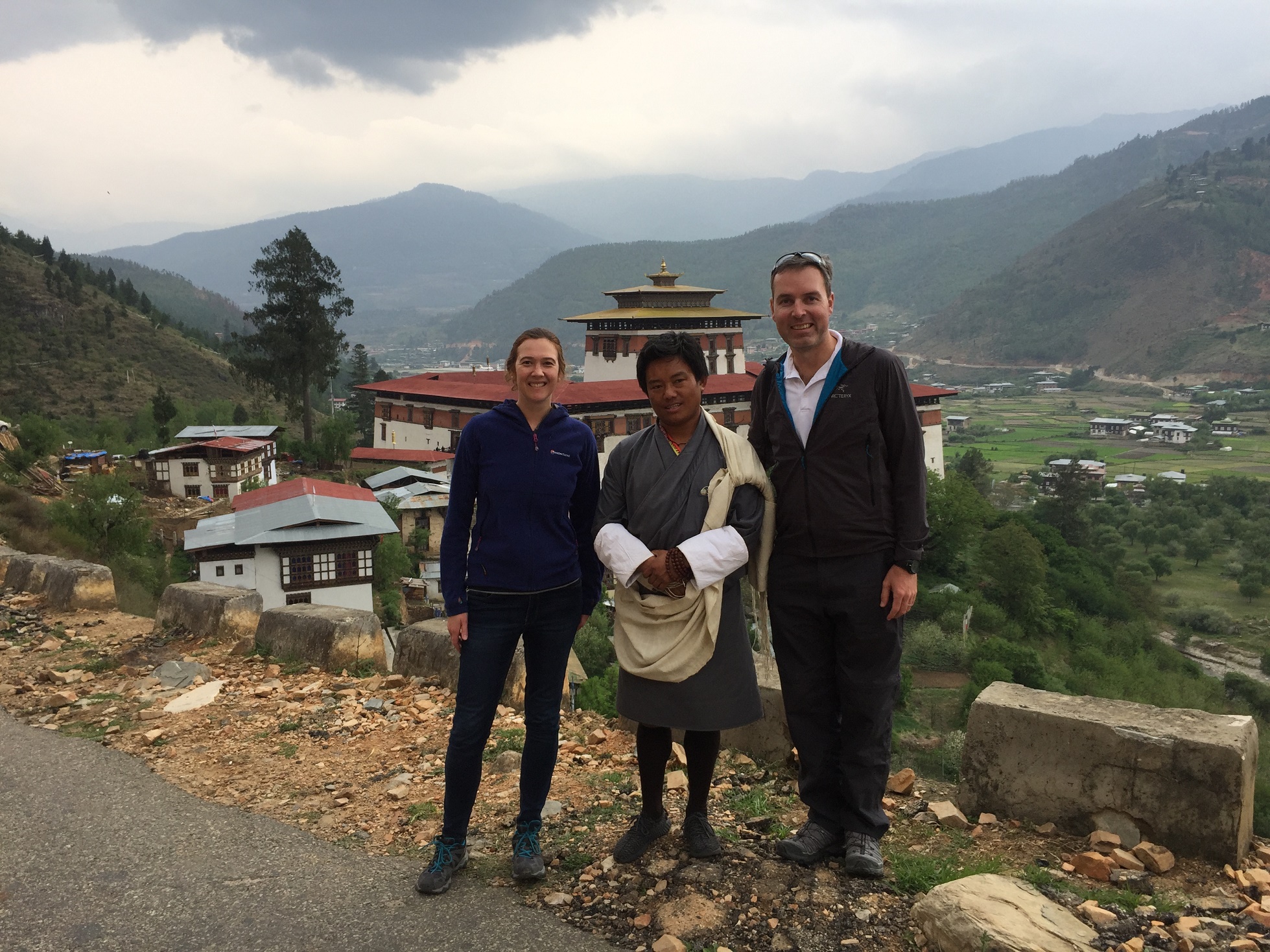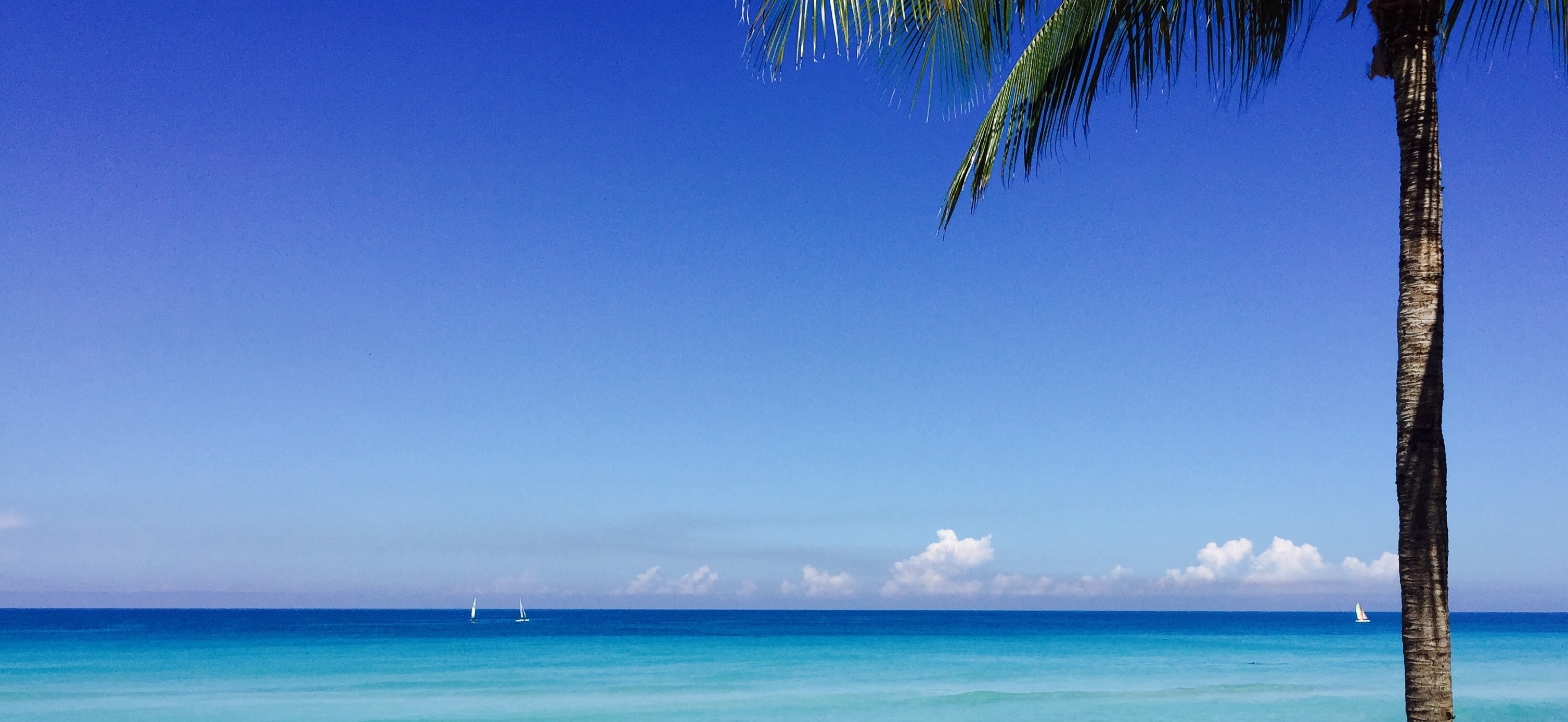After nearly 80 days of highlights, scenic wonders, cultural sight and blow-your-mind experiences across Asia, we still had one amazing sight left to see: the legendary Taktshang Lakhang, or better known as Tiger’s Nest Monastry. Bhutan’s most iconic landmark.
Tiger’s Nest Monastery is believed to be the birthplace of Buddhism in Bhutan, making it the most sacred monastery in the country. Precariously perched high up on a sheer cliff a dizzying 3,048 meter above sea level, it certainly also has the most stunning and fascinating location. From below it looks like it clings on impossibly, held in place as if by magic.
Why is it called the Tiger’s Nest? Legend has it that in 8th century Guru Rinpoche, also known as Padmasambhava and one of the holiest figure in Mahayana Buddhism, flew to this exact spot from Tibet on a back of a tigress (who was a manifestation of his divine consort). He came to subdue a demon and then took residence in a cave where he meditated for 3 years, 3 months and 3 days. He then started the conversion of Bhutanese into Buddhism.
The monastery was built in 1692 around the cave where Guru meditated. Today, it is a cultural icon of Bhutan. A trip to Bhutan is not complete without a visit to this sacred site.
Because it is a long hike up, we wanted an early start to beat the crowds and the heat and still have the afternoon left to explore other sights in Paro. The walk was not too strenuous but still took around two hours. But it was HOT and within 10 minutes my sunscreen had been sweated away.
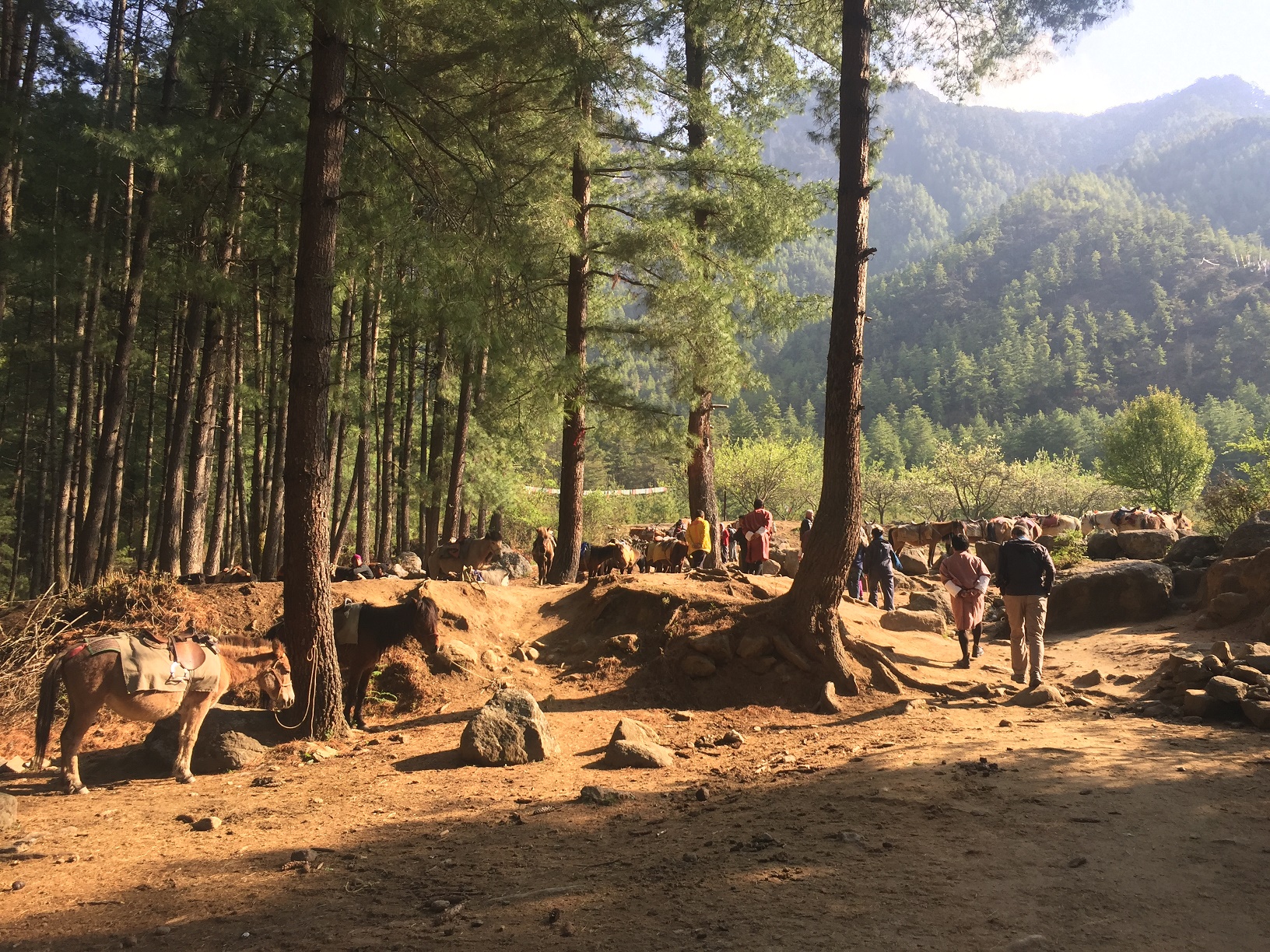
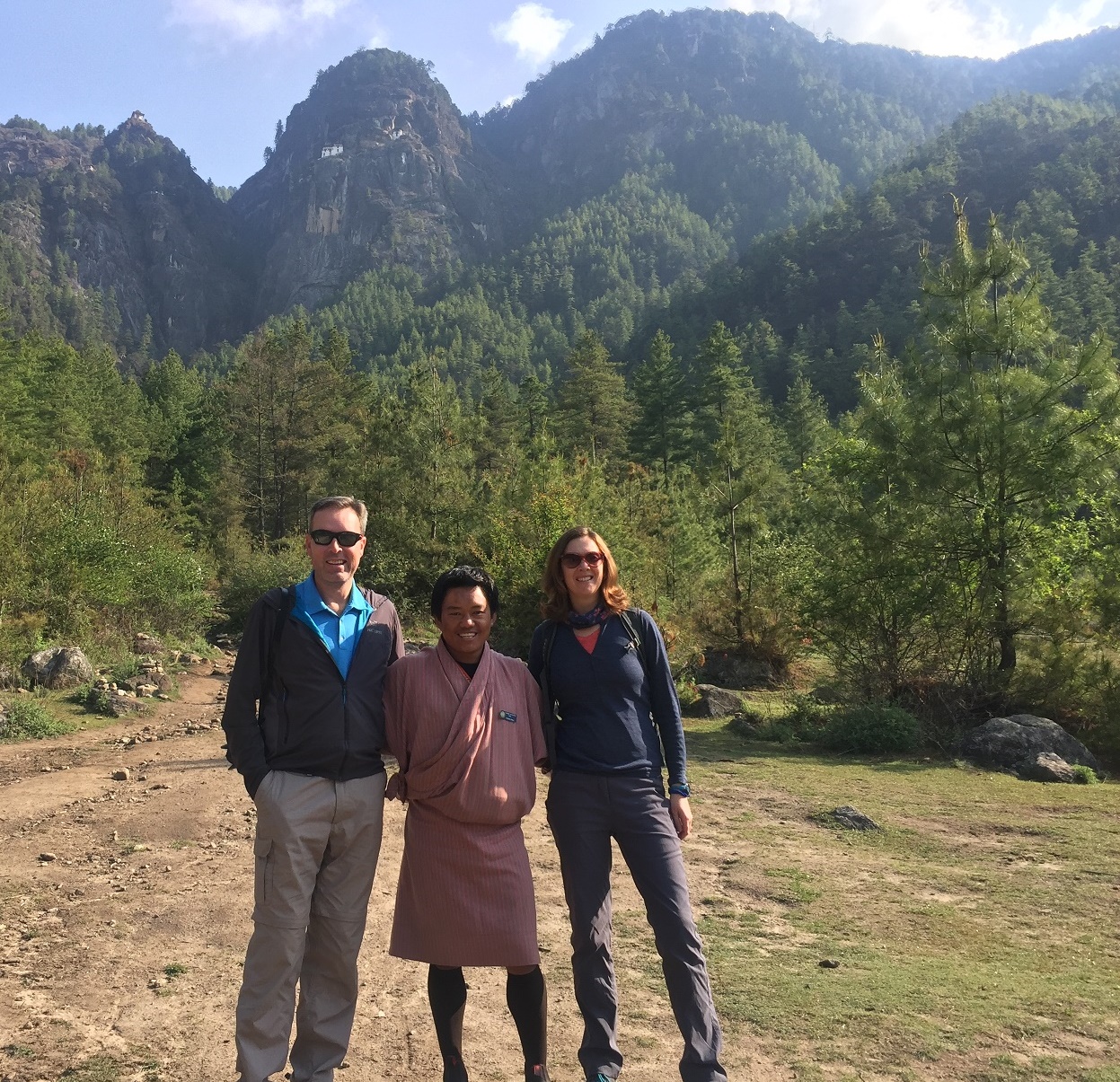
Getting ready for the hike, with our guide Drakpa and Tiger’s Nest in the background
While at times tough, the journey up is beautiful and the reward is even greater.
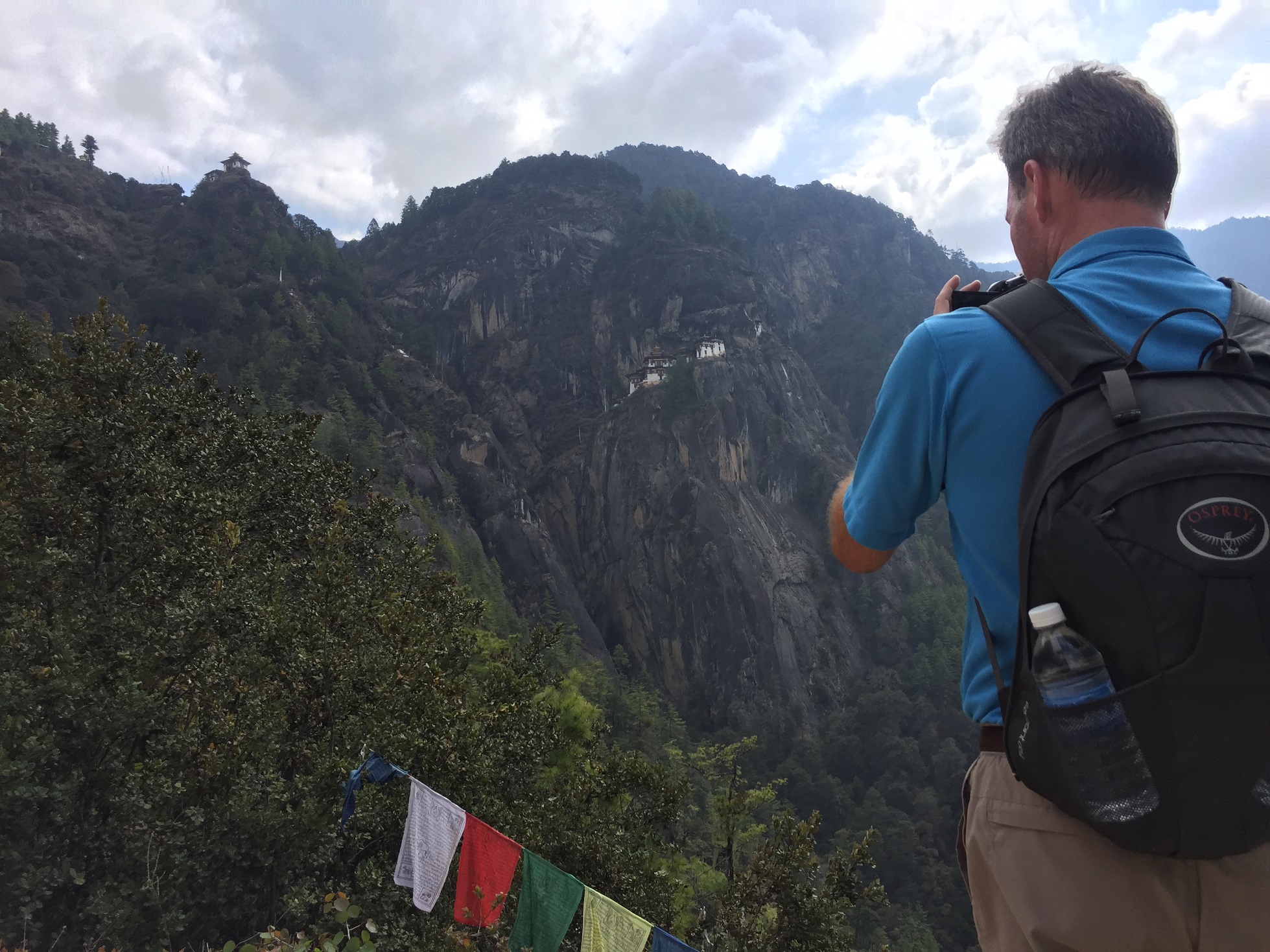
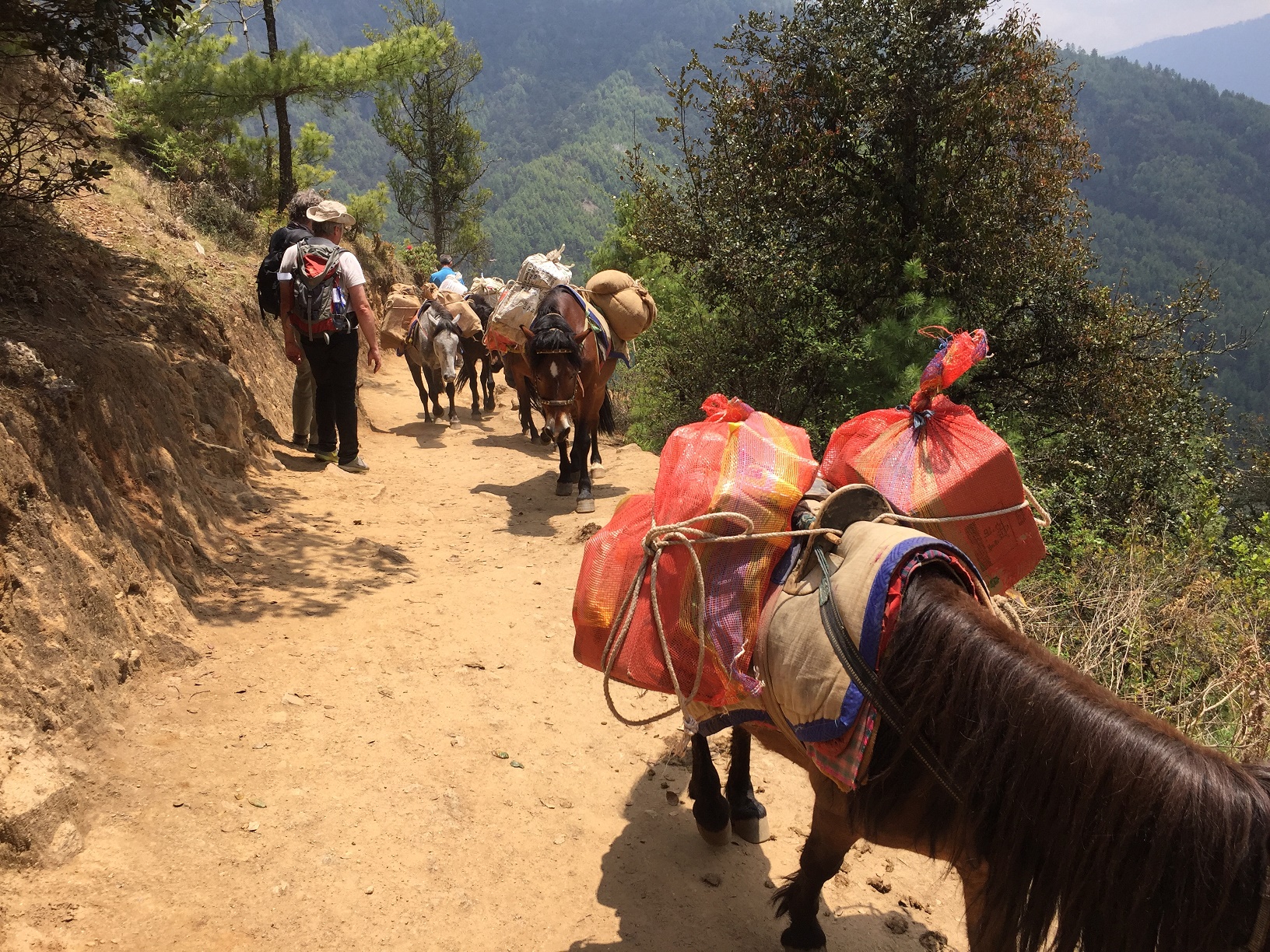
Halfway up there is a stunning lookout point, with giant prayer wheels and colourful prayer flags. The horse taxis cannot go beyond this point so they wait here to take their customers down again. It was simply spectacular.
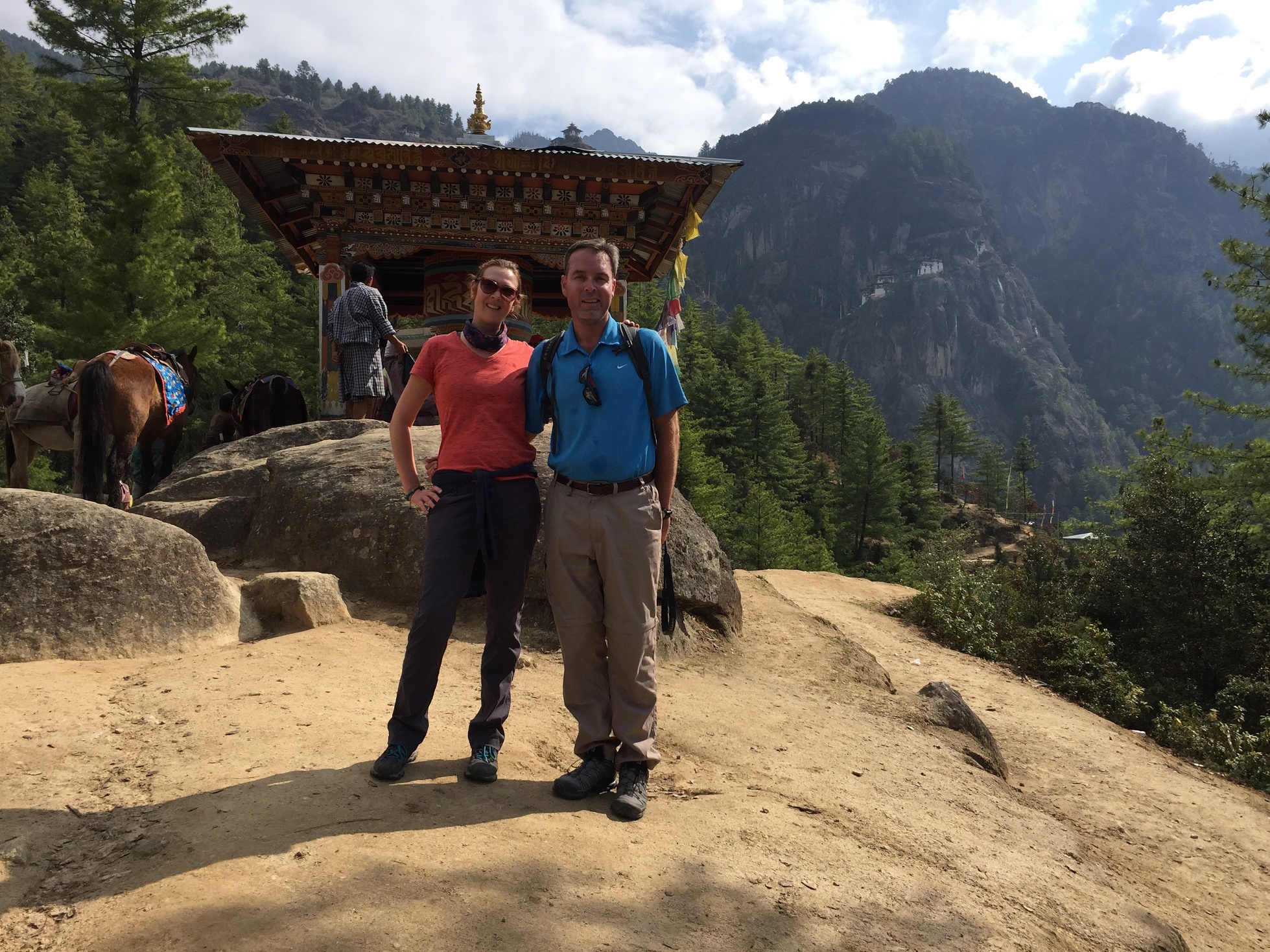
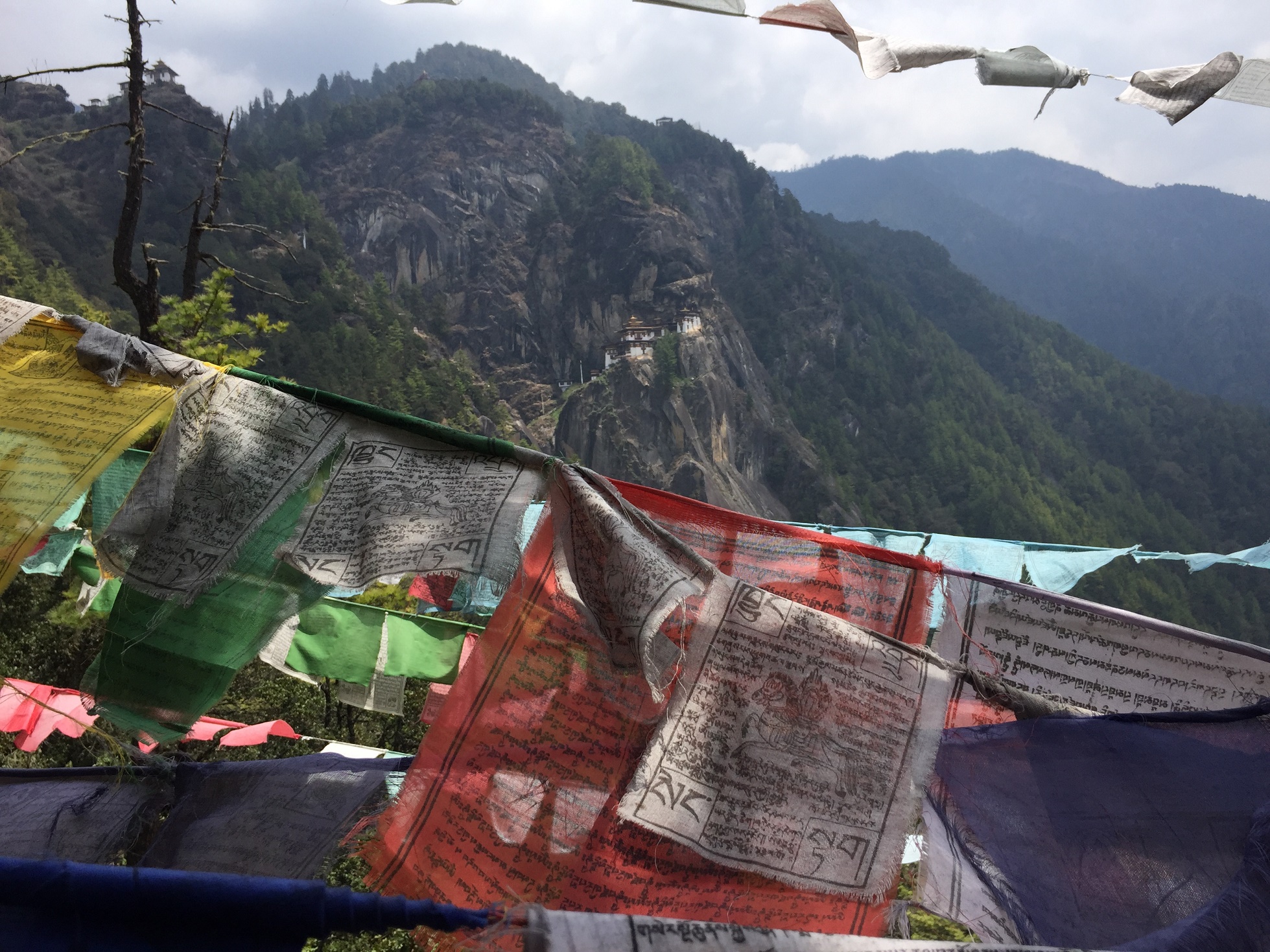
After an hour and a half of walking we still had about 800 steps ahead of us – 600 descending and 200 ascending (remember this is reversed on the way back!). At this point Adrie started complaining about her fitness, or rather lack thereof. Our legs were getting a little tired but we were too excited about getting to the monastery.
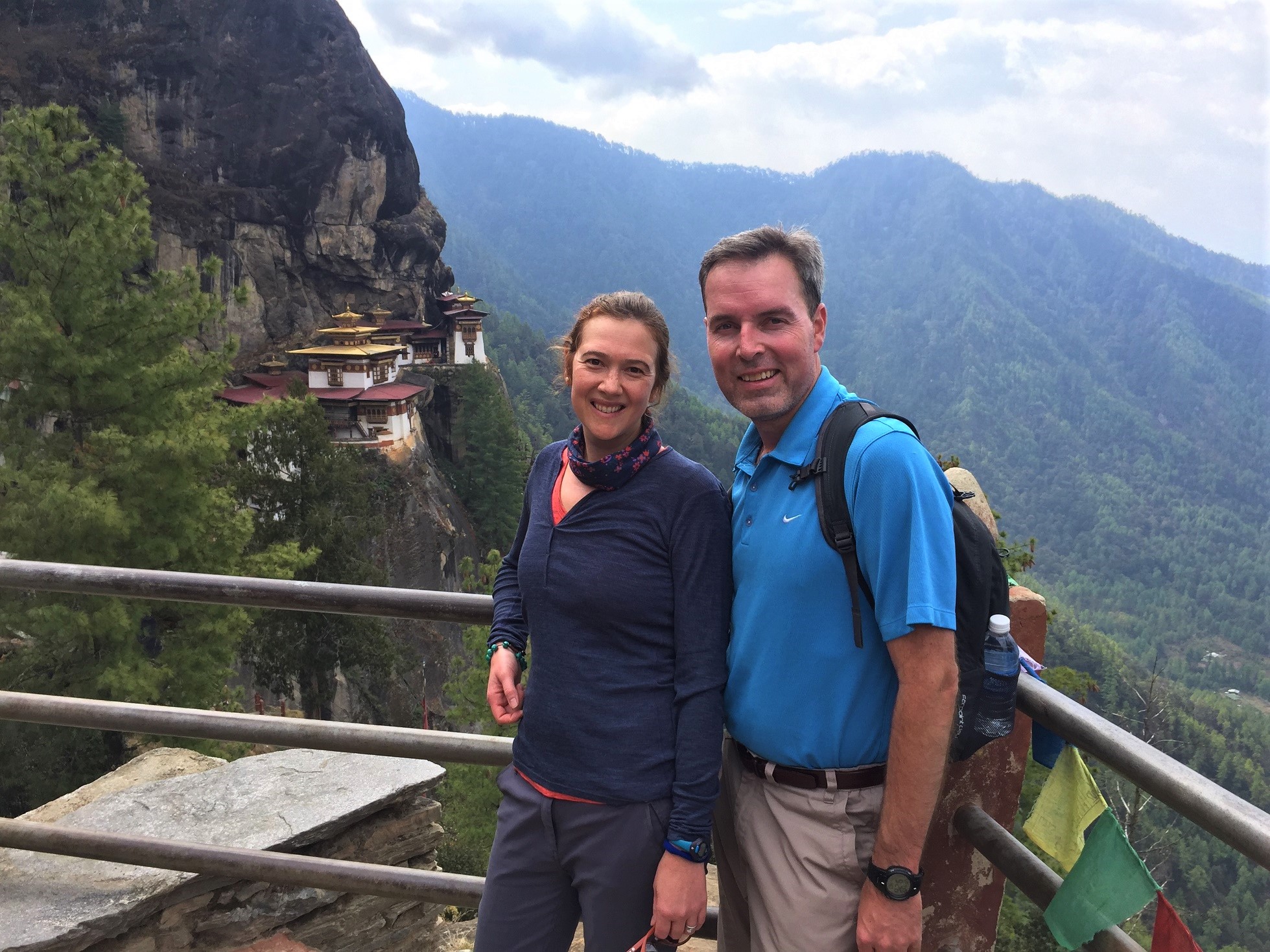
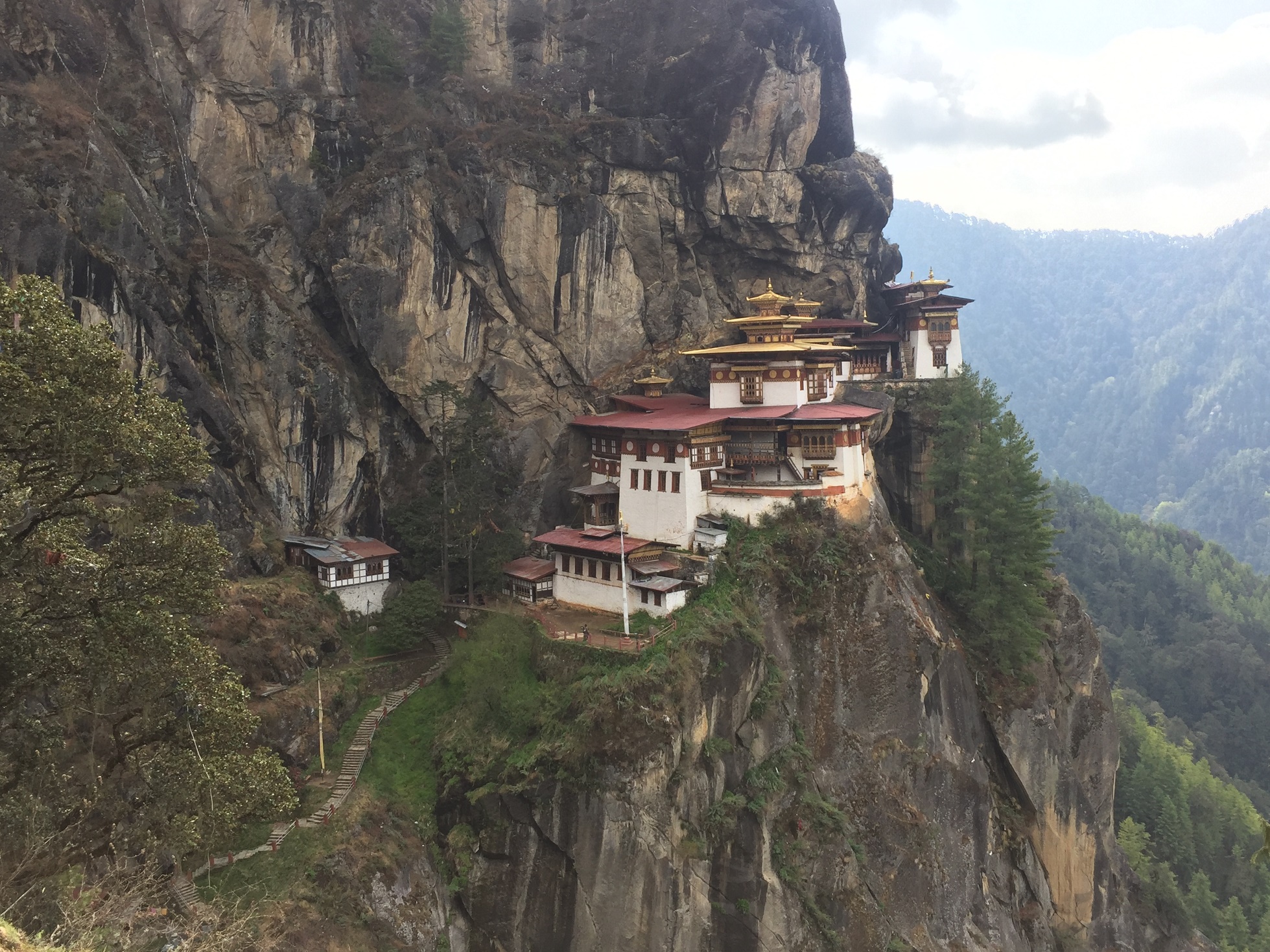
The view from the top was unbelievable. Everything in Bhutan looks untouched. The forests are verdant and abundant. The air is clean. And most importantly, the people are so friendly.
We could not take cameras, phones or backpacks inside, so could thoroughly enjoy the views and temple without thinking about the best camera shot. We made our way through the multiple spaces of the spiritual complex, full of elaborate paintings, golden statues and prayer wheels. The monastery is smaller inside than it looks from the outside. It is built over a meditation cave and had to be restored as recently at 1998 because of a fire that destroyed almost everything. The locals believe that a minute of meditation here is worth a month elsewhere, so our guide didn’t waste time and packed in a month’s worth of meditation. Looking at the view, I could understand why. The Tiger’s Nest should definitely be on anyone’s travel bucket list.
The path back down was full of countless, multi-coloured prayer flags fluttering in the breeze. Near the Tiger’s Nest we added our own that we had bought back in at the temple in Thimphu. According to a monk, today was an auspicious day to hang the flags and we couldn’t think of a nicer place. We were told that once secured we were to make a wish and the fluttering flags would carry the prayers on the breeze.

Drakpa tying our prayer flags
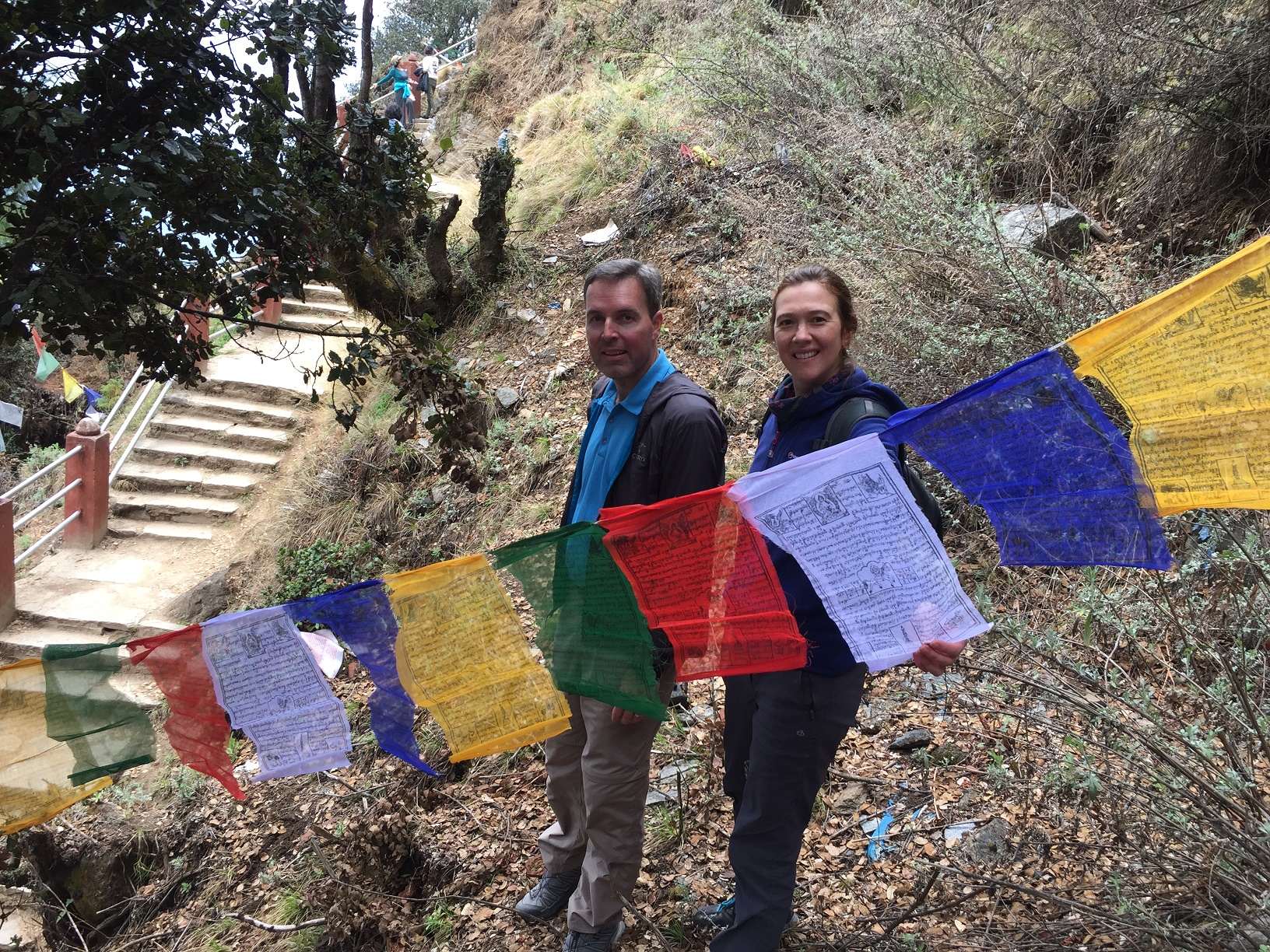
We had worked up an appetite all morning and we were looking forward to lunch in Paro. Disappointingly, we were served the same mash up of rice and chicken and potatoes that we have had all week. This is the only downside I can think of about Bhutan – every meal was exactly the same so became a bit tiresome after a while.
Our final stop in Bhutan was to visit a local farmhouse. Not only were we going to join the family for dinner, they also offered a traditional hot stone bath and we could practice archery in their garden! We were shooting bow and arrow over about 30m, a long way off from the 150m the locals were shooting! My first efforts were completely pathetic but I didn’t want to shoot it too far and kill a cow in the neighbouring field. After about 20 attempts I eventually got one on target. Our guide put both of us to shame!
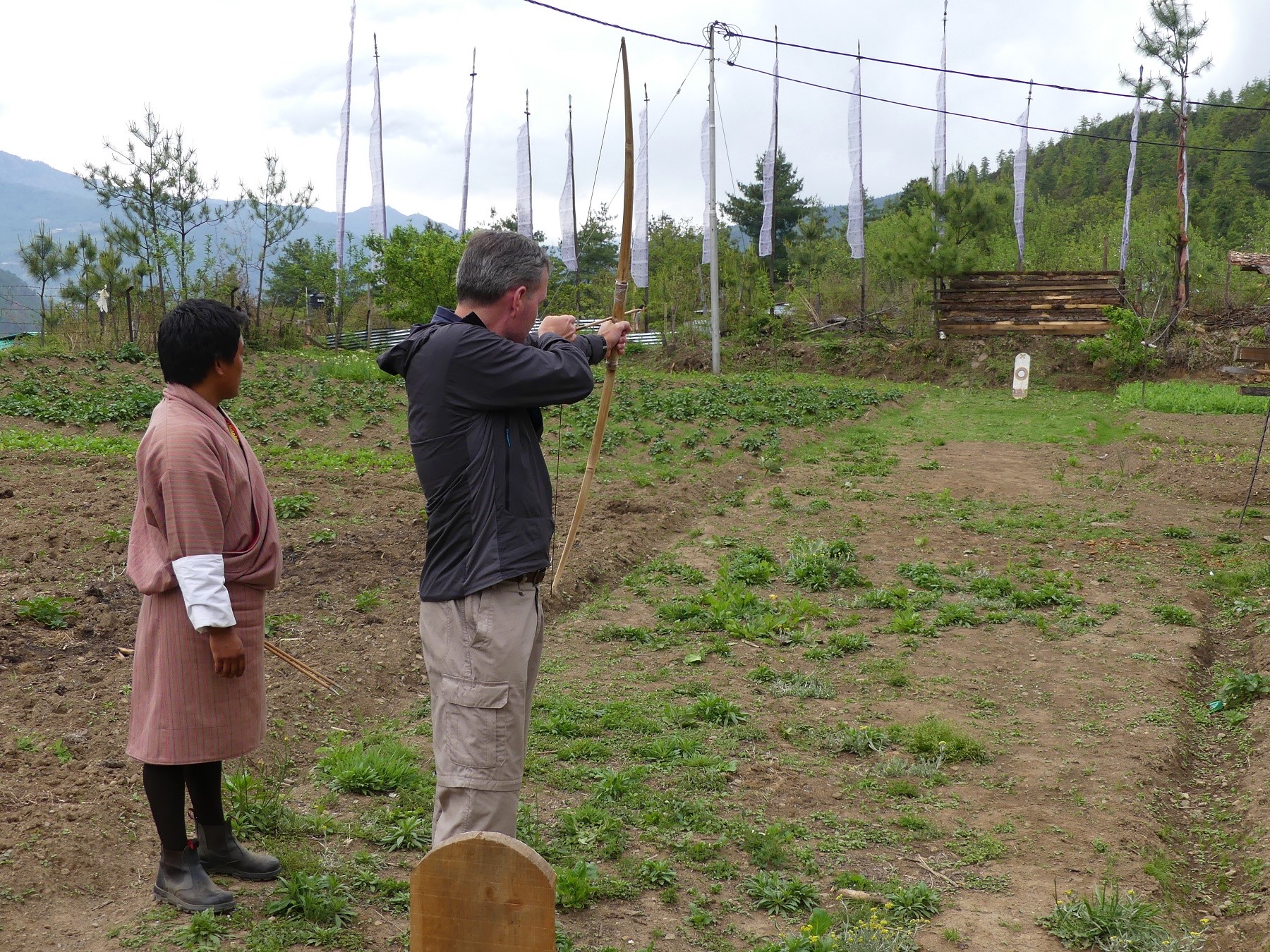
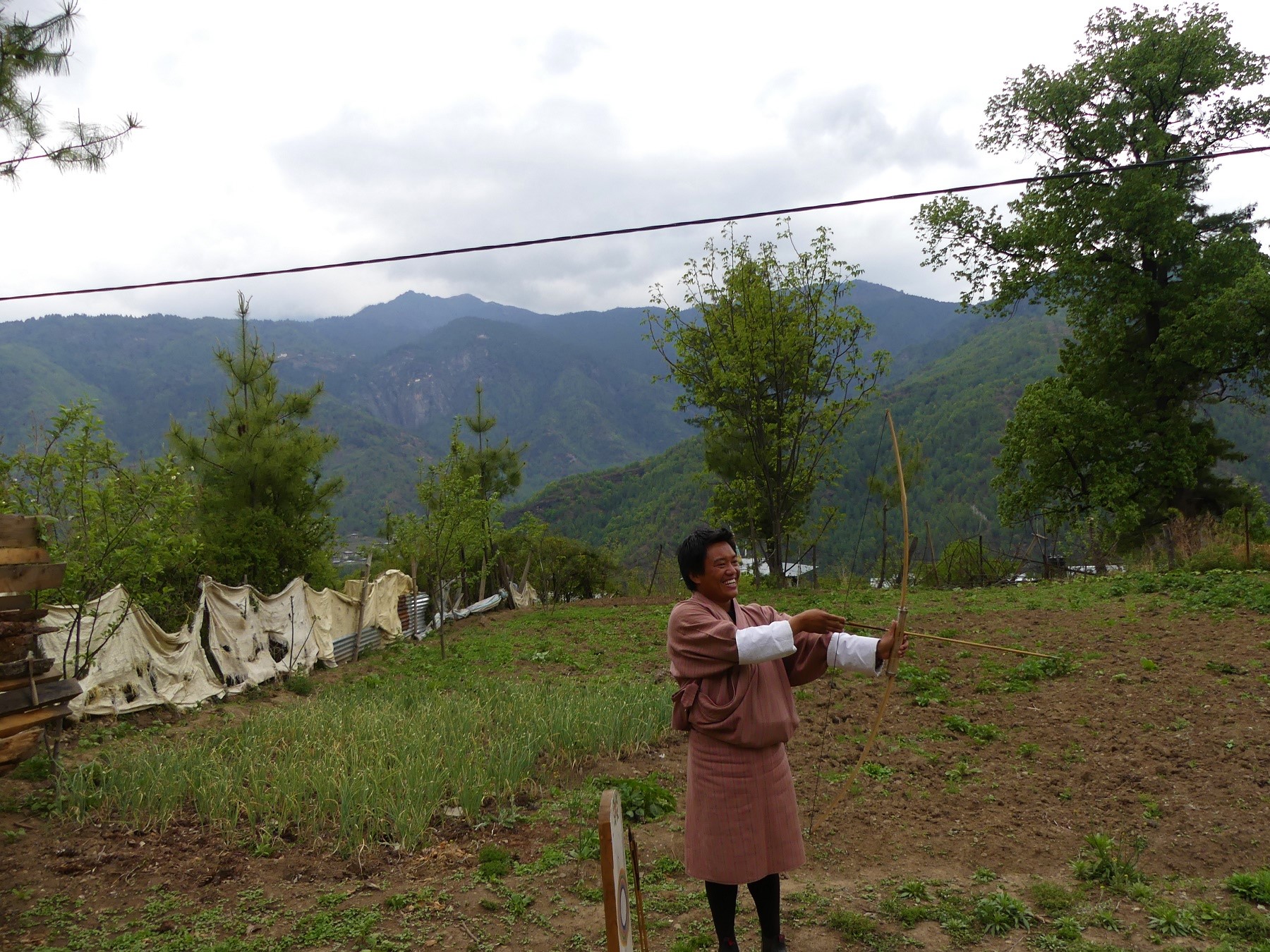
Next came darts. But not ordinary darts… more like giant garden darts. Imagine a dart of the size you would need to tranquilise an elephant and you get the idea. We were all useless at this, but at least Drukpa got one to stick.
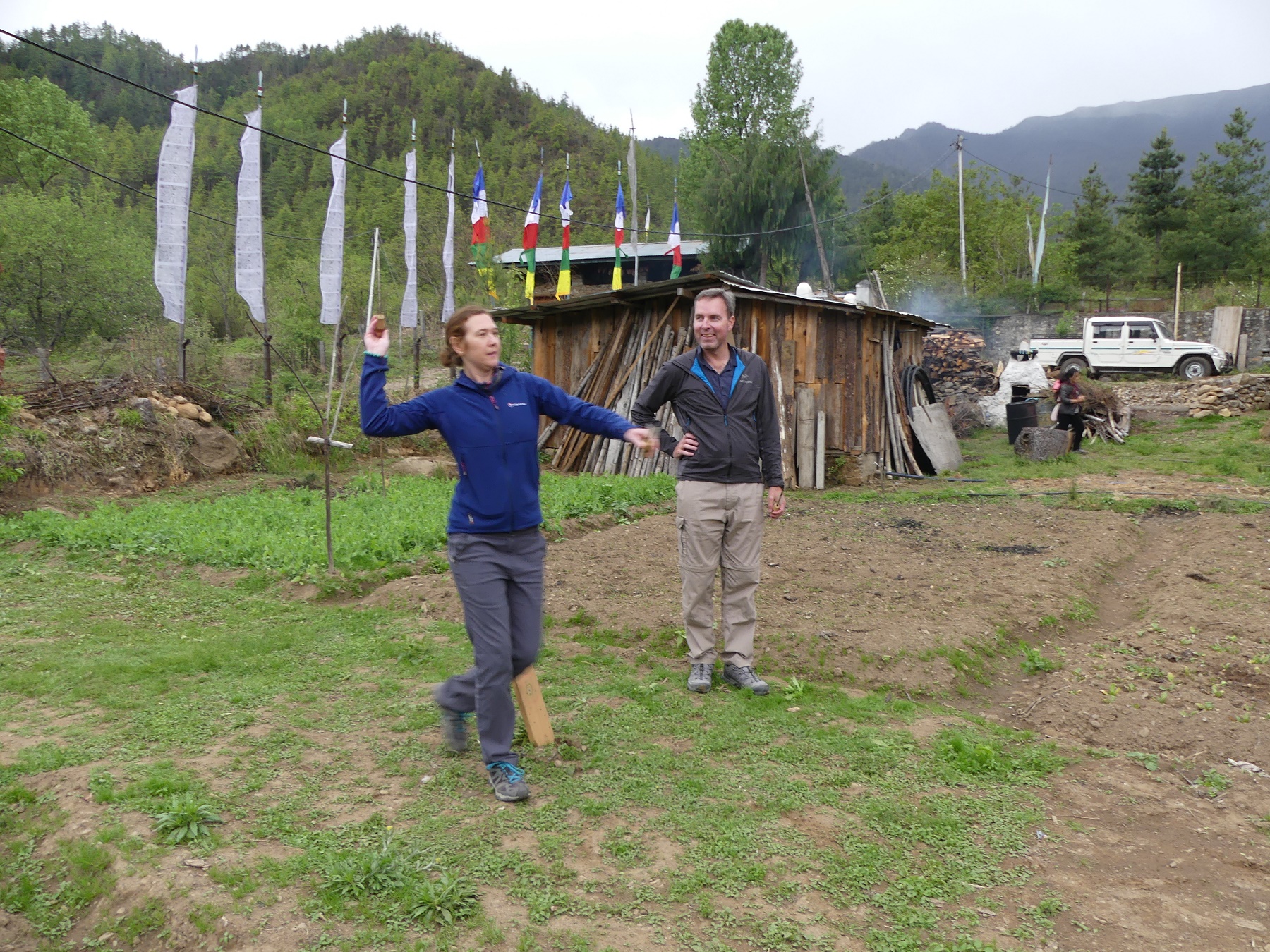
Adrie trying her hand at darts
After our busy day we were glad to chill out in our hot stone baths. River rocks are heated white-hot in a bonfire and deposited into the water. When I got in, it was warmer than some of the onsen we had in Japan and it was quite relaxing. Whenever needed, we could just shout “hot stone” to get another rock to help reheat. It was difficult to get out back into the cold evening air.
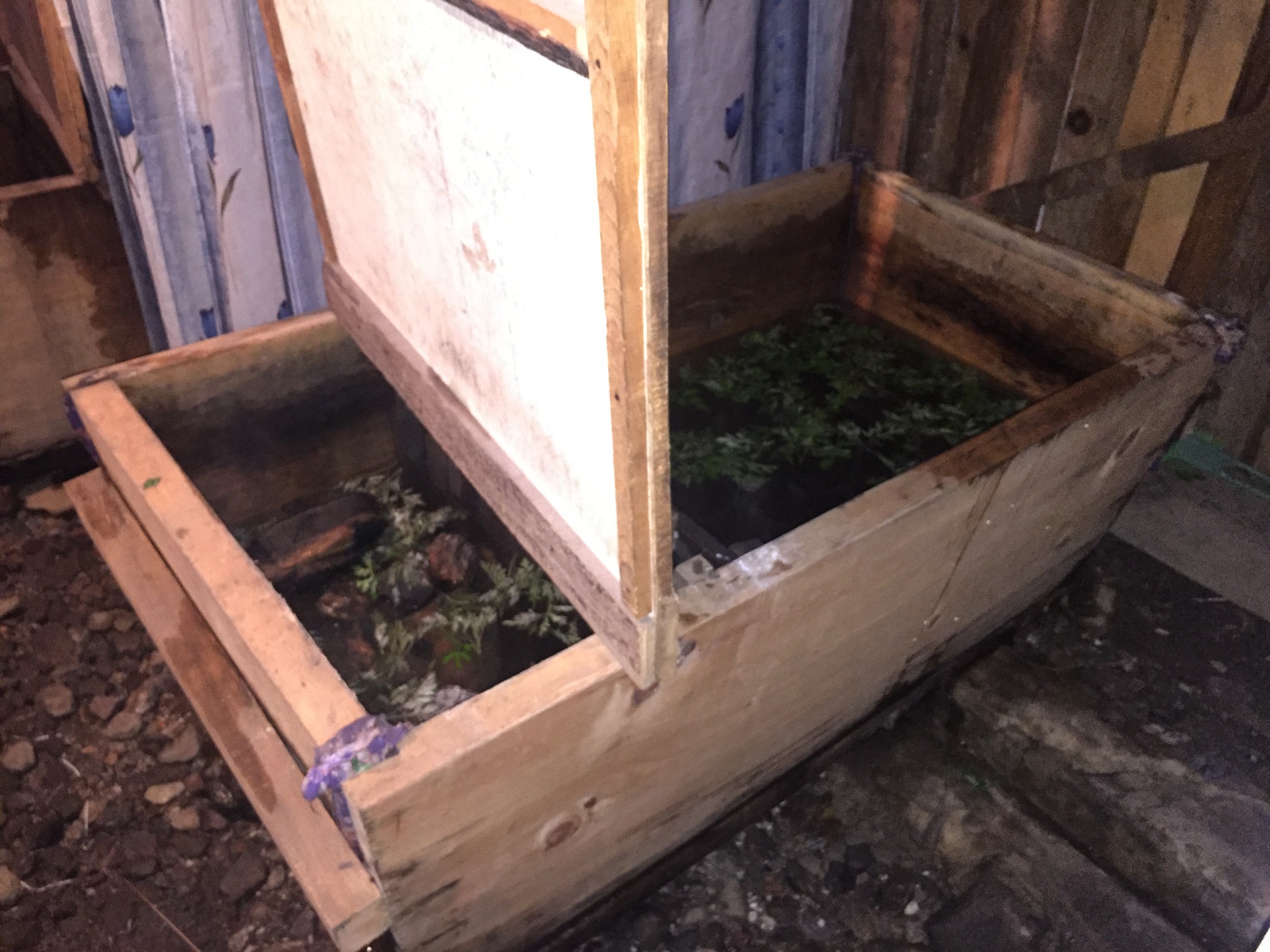
We joined the family for dinner and Adrie was delighted when they also served rice wine (as strong as the ubiquitous chillies!). Our dinner was (surprise, surprise) the same as we have eaten over the last few days but with the added benefit of actually tasting delicious – as you would expect with home cooking.
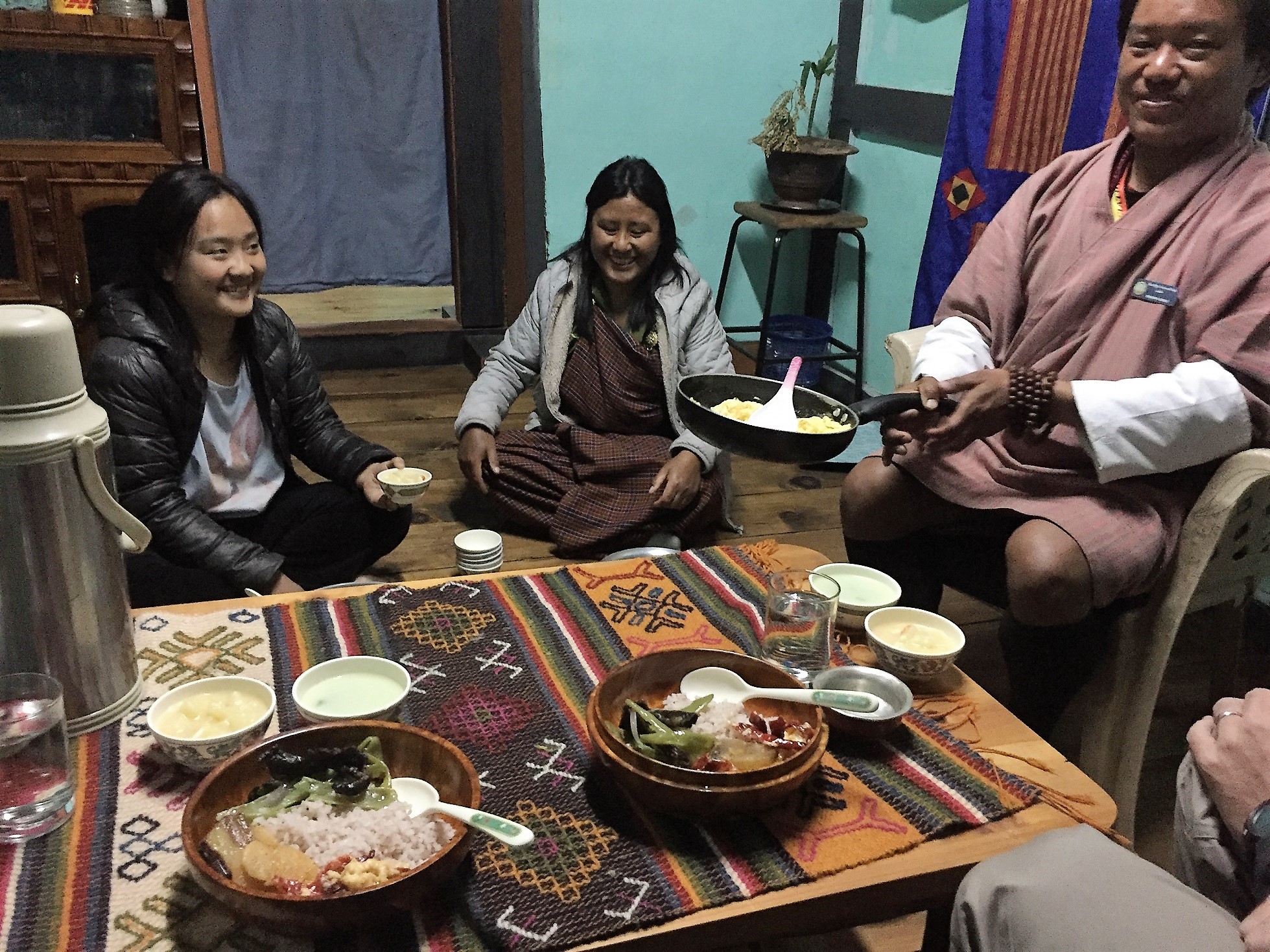
We had some interesting discussions (translated through Drukpa) as the family asked about our time in Tibet and what it was like there. We told them about the suppression of rights of the locals, of the cameras in the cars, of the spy monks in the monasteries and of the general feeling of the local Buddhists just being scared. They looked shocked, surprised and really concerned about their fellow believers.
Bhutan really is a Shangri-la. They have a slogan: Happiness is a place; it’s called Bhutan. It is so true.
For example, while walking in the streets of Paro today, I spotted a Lost & Found box nailed to a wall. Inside it had a person’s bank savings book that someone had picked up and placed there rather than being stolen or worse, simply left discarded on the pavement in the rain.
Your senses are bombarded from breakfast to bedtime with jaw-dropping topography that stretches ad infinitum, mystical temples and centuries-old fortresses. It seems like a dream world to live here. No matter how long you visit for, it is not nearly long enough.
